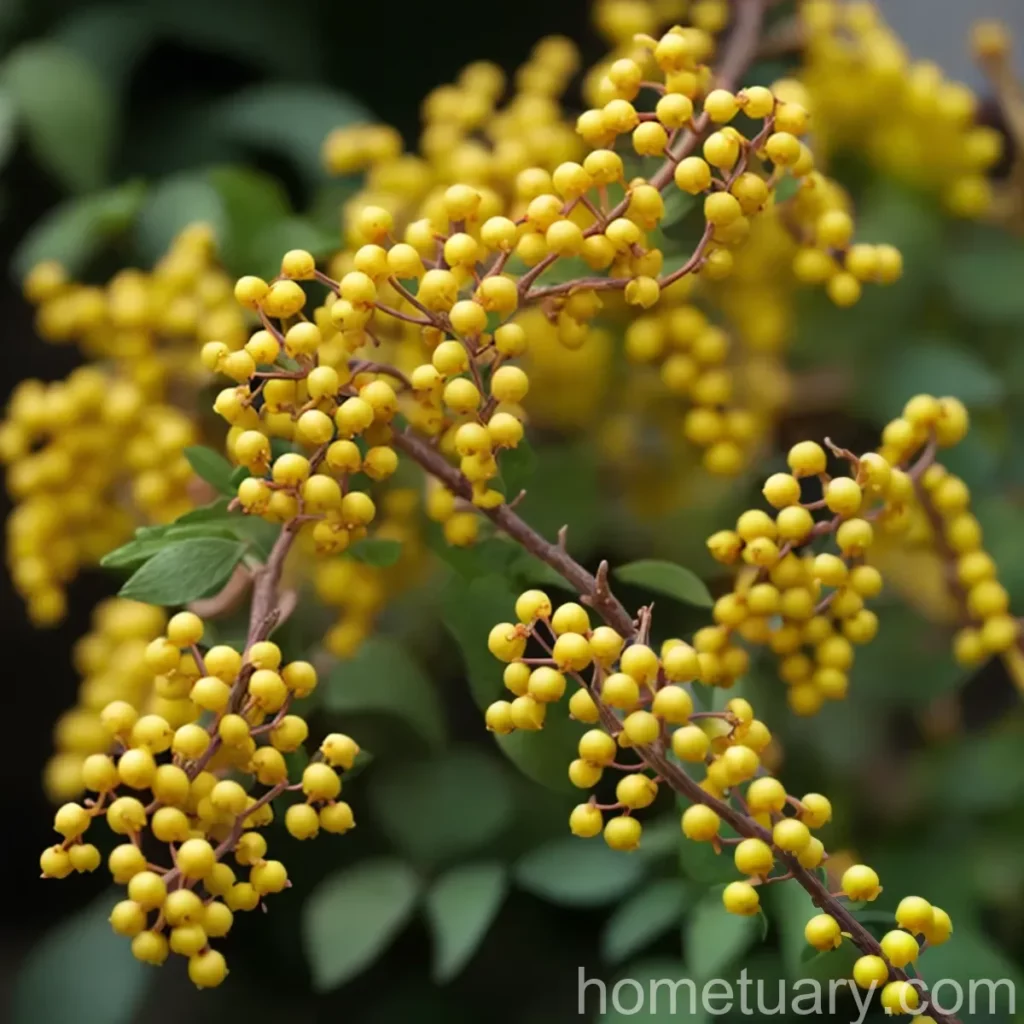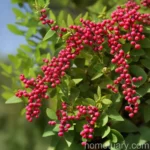Plant Scientist’s Guide to Japanese Barberry (Berberis thunbergii ‘Talago’ SUNJOY GOLD BERET)
Introduction
As a plant scientist, I am excited to delve into the world of Japanese barberry, scientifically known as Berberis thunbergii. This plant species is known for its vibrant and colorful foliage, making it a popular choice for landscaping and ornamental purposes. In this comprehensive guide, we will explore the cultural aspects, uses, water and sunlight requirements, fertilizer needs, soil preferences, pruning techniques, propagation methods, container gardening, common diseases, pests, and interesting botanist’s tips related to the Japanese barberry, specifically the ‘Talago’ SUNJOY GOLD BERET variety.
What is Japanese Barberry (Berberis thunbergii ‘Talago’ SUNJOY GOLD BERET)?
Japanese barberry (Berberis thunbergii) is a deciduous shrub native to Japan and Eastern Asia. It is a compact, low-growing plant with thorny branches and vibrant foliage, making it a popular choice for ornamental and landscape design. The ‘Talago’ SUNJOY GOLD BERET variety is particularly sought after for its striking golden leaves and compact growth habit, which makes it an ideal choice for small spaces and garden borders.
This variety of Japanese barberry is known for its low-maintenance nature and tolerance to various environmental conditions, making it a versatile addition to any garden or landscape setting. Its dense growth and colorful foliage make it an attractive option for gardeners and landscapers looking to add visual interest and vibrancy to their outdoor spaces.
Key Takeaways – Japanese Barberry (Berberis thunbergii ‘Talago’ SUNJOY GOLD BERET)
Culture
- Hardiness Zones: Japanese barberry is adaptable to a wide range of hardiness zones, typically thriving in zones 4 to 8.
- Growth Habit: Compact, low-growing shrub with a dense and spreading nature.
- Foliage Color: Striking golden foliage, adding vibrant color to the landscape.
- Uses: Ideal for landscaping, borders, hedges, and ornamental garden design.
Uses
Japanese barberry, particularly the ‘Talago’ SUNJOY GOLD BERET variety, offers a multitude of uses in garden and landscape settings. Some of its common uses include:
- Ornamental Planting: The vibrant golden foliage of the ‘Talago’ SUNJOY GOLD BERET variety makes it a popular choice for ornamental planting, adding a burst of color to the garden landscape.
- Border Planting: Its compact and low-spreading growth habit makes it well-suited for border planting, delineating garden beds and pathways.
- Hedge Formation: Japanese barberry can be pruned to form dense and colorful hedges, providing both aesthetic appeal and functional barriers in the landscape.
Water
- Watering Needs: Japanese barberry, including the ‘Talago’ SUNJOY GOLD BERET variety, has moderate water needs. It prefers well-drained soil and should be watered regularly during the growing season, especially during hot and dry periods.
Sunlight
- Sun Requirements: This plant thrives in full sun to partial shade, making it adaptable to a variety of light conditions. However, it typically showcases its best coloration in full sun, where its golden foliage can truly shine.
Fertilizer
- Fertilization: Japanese barberry generally has low to moderate fertilizer needs. A balanced, slow-release fertilizer applied in spring can help promote healthy growth and vibrant foliage coloration.
Soil
- Soil Preferences: Well-drained, fertile soil is ideal for Japanese barberry. It can adapt to various soil types, including loamy, sandy, or clay soils, as long as they offer good drainage.
Pruning
- Pruning Techniques: Pruning can be done in late winter to early spring to maintain the desired shape and size of the plant. Regular pruning helps promote dense growth and encourages vibrant foliage.
Propagation
- Propagation Methods: Japanese barberry, including the ‘Talago’ SUNJOY GOLD BERET variety, can be propagated through stem cuttings or by division. These methods allow for the creation of new plants with similar characteristics to the parent plant.
Container
- Container Gardening: Due to its compact growth habit, Japanese barberry, particularly the ‘Talago’ SUNJOY GOLD BERET variety, can be grown in containers, making it suitable for small gardens, patios, or urban landscapes.
Popularity
- Landscape Appeal: Its vibrant and colorful foliage, along with its low-maintenance nature, makes Japanese barberry a popular choice for landscape designers, homeowners, and gardening enthusiasts.
Common Diseases
Japanese barberry, like many plant species, is susceptible to certain diseases that can affect its health and appearance. Some of the common diseases that may impact Japanese barberry, including the ‘Talago’ SUNJOY GOLD BERET variety, are:
- Powdery Mildew (Erysiphe spp.)
- Barberry Stem Rust (Puccinia graminis)
- Leaf Spot Diseases (Septoria spp. and Cercospora spp.)
- Root Rots (Phytophthora spp. and Armillaria spp.)
Disease Diagnosis
- Symptoms: Keep an eye out for signs of powdery white patches on foliage, orange pustules on stems, leaf spots, and wilting or discoloration of leaves, which may indicate the presence of diseases.
- Control Measures: Implementing proper cultural practices, such as ensuring good air circulation, maintaining optimal watering and fertilization, and promptly removing and disposing of infected plant parts, can help reduce the incidence of diseases.
Common Pests
While Japanese barberry is generally resistant to many pests, it can still be affected by certain insect pests, including:
- Aphids
- Scale Insects
- Spider Mites
- Japanese Beetle
Botanist’s Tips
As a plant scientist, I have some valuable tips for cultivating and caring for Japanese barberry, particularly the ‘Talago’ SUNJOY GOLD BERET variety. Here are some expert insights to help you maximize the beauty and health of these plants:
- Regular Inspection: Periodically inspect the plants for signs of pests, diseases, or any cultural issues, and take proactive measures to address them.
- Pruning for Shape: Utilize proper pruning techniques to maintain the shape and size of the plants, promoting a neat and compact appearance.
- Soil Amendments: Amend the soil with organic matter to improve its fertility and drainage, creating an optimal growing environment for Japanese barberry.
- Watering Practices: Avoid overwatering the plants, as Japanese barberry prefers well-drained soil and can be susceptible to root rot if the soil remains excessively wet.
Fun Facts
- The name “Berberis” is derived from the Arabic word “barbaris”, which refers to a plant with thorny branches.
- Japanese barberry is often used in traditional medicine for various therapeutic purposes due to the presence of bioactive compounds in its roots and bark.
Links to External Resources
For further information on Japanese barberry (Berberis thunbergii ‘Talago’ SUNJOY GOLD BERET) and related topics, I recommend the following external resources:
- Royal Horticultural Society – Japanese Barberry
- University of Wisconsin-Madison Extension – Japanese Barberry Management
- Missouri Botanical Garden – Berberis thunbergii ‘Talago’ SUNJOY GOLD BERET
In conclusion, Japanese barberry, especially the ‘Talago’ SUNJOY GOLD BERET variety, offers a delightful combination of vibrant foliage, compact growth, and versatility in landscaping and garden design. By understanding its cultural requirements, uses, common diseases, pests, and expert tips, gardeners and enthusiasts can cultivate and enjoy the beauty of Japanese barberry in their outdoor spaces.
As a plant scientist, I encourage you to explore the unique characteristics and benefits of Japanese barberry, adding a touch of golden elegance to your garden or landscape with this captivating plant species.
Happy Gardening!
Now perhaps for the final edits, let me add the bibliography:
References
- Royal Horticultural Society. “Berberis thunbergii ‘Talago’ SUNJOY GOLD BERET.” Royal Horticultural Society, www.rhs.org.uk/plants/22234/berberis-thunbergii-talago-sunjoy-gold-beret/details.
- University of Wisconsin-Madison Extension. “Japanese Barberry Management.” University of Wisconsin-Madison Extension, fyi.extension.wisc.edu/news/2018/11/30/japanese-barberry-invasive-plant-of-the-year/.
- Missouri Botanical Garden. “Berberis thunbergii ‘Talago’ SUNJOY GOLD BERET.” Missouri Botanical Garden, www.missouribotanicalgarden.org/PlantFinder/PlantFinderDetails.aspx?taxonid=290800.















